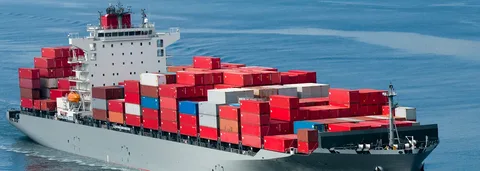
Affordable Shipping Containers for Businesses and Individuals
- Book My Author
- Business
- 2025-09-23 21:15:40
- 931K
A shipping container is a standardized steel box designed for transporting goods across distances by sea, rail, or truck. Sizes, materials, and features vary (dry van, refrigerated/reefer, open top, flat rack, etc.).
Affordable in this context means obtaining a container or using container shipping services at cost levels reasonable for small business or individual budgets balancing price, condition, reliability, and additional fees.
There are two main realities:
- Buying or leasing physical containers (for storage, modifications, or ownership).
- Using containers for transporting goods international container shipping: paying for the transport of a container from an origin to a destination, via FCL (Full Container Load) or via other fractional/sharing arrangements.
Both have cost components; decisions and tradeoffs matter.
What Types and Sizes Exist
Key container types and their dimensions:
- Standard dry containers: most common are 20 foot and 40 foot containers. A 40 ft container (FEU or 40 foot equivalent) has nearly double the cubic capacity of a 20 ft (TEU). High cube versions add height.
- Refrigerated (reefer) containers: for goods requiring temperature control. More expensive.
- Special containers: flat racks, open tops, etc., for oversized or unusual cargo. These cost more.
Condition is important:
- New (one trip or cargo worthy) containers cost more.
- Used containers are cheaper but may have wear, rust, small leaks, or require repairs.
What Are Typical Costs in 2025
Here are some up to date cost figures (USA relevant, or international → USA) to give a sense of what affordable might mean.
- Container purchase cost (USA): For a used standard 20 foot or 40 foot dry container, prices typically range from about US$1,800 to US$8,300 depending on condition, location, and modifications.
- Additional costs for modifications (such as insulation, windows, doors, special flooring) can drive prices much higher. Some heavily modified units (e.g. storage converted to offices) may cost tens of thousands.
- International container shipping (transport cost): For FCL containers being shipped from Asia to U.S. West Coast spot rates for 40 foot containers have recently been falling, but typical rates can be in the range of US$1,700–US$3,000+ (for major routes) per container, depending on origin/destination, demand, etc. For example, Asia U.S. West Coast spot rates around US$1,725/FEU in early September 2025 in the Freightos Baltic Index.
- Average shipping to the USA for 20 ft or 40 ft containers (from overseas) ranges from US$1,880 to US$6,550 depending on port, origin, container size.
What Makes Up the Full Cost
Affordable shipping containers cost isn’t just the base price. Components include:
- Purchase price (or rental/lease) of the container.
- Transport cost to deliver the container (if buying locally, shipping empty from depot; if overseas, the freight).
- Inland transport (truck/rail) from your site to or from port.
- Port and terminal handling fees.
- Customs, duties, import/export permits.
- Modifications or refurbishing if needed.
- Maintenance / repairs / condition inspections.
- Insurance (ownership or transit).
- Additional surcharges: fuel, environmental/regulatory fees, detention/demurrage if delays.
Which Containers Are Best for Cost Sensitive Buyers
When trying to get shipping containers affordably, there are trade offs. Here are choices you’ll need to make, and which options tend to produce lower cost without sacrificing necessary quality.
| Decision | Cheaper/Budget Option | Tradeoffs / Considerations |
| Condition | Used, cargo worthy containers; one trip that have made only one major voyage; refurbished units | May need repairs, rust treatment, less ideal cosmetic condition; check structural integrity, seals, doors. |
| Size | Standard 20 ft rather than 40 ft unless truly needed; use high cube only if extra height is worth the cost. | Larger containers cost more to buy, move, permit, and may increase transport fees; sometimes site access restrictions. |
| Type | Dry standard containers vs reefers or special containers | Reefers cost more (power, maintenance); special containers have availability issues and higher surcharges. |
| Location of purchase | Buying locally (within your region) to reduce inland transport; depots near ports; used container suppliers nearby | Imported containers are cheaper but transport of empty containers to your site may offset savings; check hidden transport and handling costs. |
| Time of purchase / shipping | Off peak season; negotiating with sellers; monitoring market drops | Waiting longer may risk rate volatility, but discount may be available; need flexibility. |
Which Shipping Routes & Carriers Offer More Affordable Container Transport
Choosing which route, which carrier, and which service level has large impact:
- Major trade lanes with high volume (Asia U.S., Europe U.S.) tend to have more competitive rates due to carrier competition and volume. Rates on Asia U.S. routes are falling significantly in mid 2025.
- Ports on the West Coast tend to be cheaper when shipping from Asia (if your destination or origin aligns), but internal transport cost to or from the East Coast may tip the balance.
- FCL (Full Container Load) vs sharing or consolidation (if using via freight forwarding) FCL generally cheaper per cubic/weight unit if you fill the container, but LCL or shared services may be more cost efficient for smaller loads.
- Carrier choice: Some carriers offer economy or slower sailings at lower cost; others faster but more expensive. Also, some carriers may have special deals or pricing holds via term contracts.
Who Needs Affordable Shipping Containers / Who Supplies Them
Customers / Buyers
- Small businesses exporting products, needing to ship goods overseas using containers.
- Businesses needing storage: flexible storage units, pop up shops, construction site offices, food stalls etc, using containers adapted for storage or modular use.
- Individuals relocating overseas, or needing to move personal effects or vehicles (if container shipping).
- DIY / contractors / hobbyists converting containers into workshops, homes, etc.
Suppliers / Providers
- Container dealers / resellers: companies specializing in selling used or new containers locally.
- Rental / leasing companies: those who lease out containers for short or long term.
- Freight shipping lines / carriers: who move containers internationally; sometimes they own their container fleets, or lease.
- Freight forwarders / international container shipping service providers: who arrange transport of goods using containers, handle documentation, customs, etc.
- Modification specialists: firms who modify containers (insulate, add windows/doors, flooring, etc.).
Who Sets the Regulations and Prices
- Port authorities: terminal charges, handling, gate fees, environmental surcharges.
- Customs authorities: for import/export compliance, duties, inspections.
- Transportation regulators: state and federal – for trucking, road permits if oversize containers; local zoning if used as structures.
- Freight index providers / analytics: indices such as the Drewry World Container Index, Freightos Baltic Index, etc., which are used to benchmark and influence rates.
Where Affordable Shipping Containers Are Bought / Used
- Depots near ports or inland hubs: Regions with container depots (sea ports, rail terminals) often have surplus used containers; proximity reduces transport cost.
- Major logistics centers in California, Texas, New York/New Jersey, Georgia etc. These often have container suppliers and less cost in transport.
- Where containers are used: storage yards, construction sites, modular offices in urban or rural locations; businesses exporting from manufacturing sites; individuals moving internationally out of major port cities.
Where Shipping Container Transport Cost Is Lower / Higher
- Lower cost routes: routes and origins with high traffic (e.g. Asia USA West Coast, Europe USA East Coast) tend to have more competition which tends to reduce rates. The recent drops in Asia USA sea freight rates illustrate this.
- Higher cost routes: remote origin/destination, special container requirements (reefers, open top), large inland distances for delivery/pickup; ports with high congestion or emission fees; or origin from countries with limited shipping volume.
- Where regulatory or fee changes are affecting costs: U.S. port fees on certain vessels (e.g. Chinese built, or owned/operated ships) starting in late 2025 may impact cost for shipping companies and thus container transport fees. These may be passed on to shippers.
Why Affordable Shipping Containers Matter
- Cost control: Whether shipping goods internationally or needing shipping containers for storage or conversion, the container cost is a large component; managing it well can make the difference in whether a business makes margin.
- Access & scalability: Lower container costs mean smaller businesses or individuals can access container usage, whether for shipping or repurposing, without needing large capital.
- Better cash flow & lower risk: Buying used, choosing affordable shipping routes, negotiating rates helps reduce upfront and ongoing costs, reducing financial pressure.
- Environmental / sustainability reasons: Using used containers, optimizing usage, avoiding empty repositioning, choosing efficient routes; better for sustainability.
Why Costs Are Changing in 2025 (Relevant to Making Things Affordable)
- Sea freight rates are declining in many major trade lanes (e.g. Asia USA). Oversupply of vessel capacity, drop in demand, geopolitical trade adjustments have contributed.
- Used container availability / cost: Used containers are scarcer in some markets, pushing prices up. The first quarter of 2025 saw limited supply for used containers.
- Additional fees / regulatory surcharges increasing: Fuel, environmental regulations, port fees, vessel origin rules (e.g. fees for Chinese built/ operated vessels entering U.S. ports) are expected to increase, adding to shipping costs and affecting affordability.
- Freight index declines: Spot rates on container shipping indices (Drewry, FBX) have shown declines, which may present opportunities for better deals. For example, Drewry’s World Container Index recently dropped to about US$1,913 per 40 ft container on certain routes.
- Slower but more predictable service: As rates decline, some forwarders and carriers may reduce blank sailings (skipping voyages), reducing unpredictability; however delays may still occur.
When to Buy / Rent / Ship for Best Affordability
- Off peak demand periods: When demand for containers/shipping is lower, rates are softer. Avoid peak seasons (e.g. pre holiday imports, demand surges).
- When used container supply is good: Monitor market signals for used container availability; when supply is tighter, used container prices go up. Buying when supply is sufficient gives bargains.
- When shipping rates are trending downward: 2025 has seen declining spot rates on many lanes; waiting may yield better rates but risk of missing modulatory or policy changes must be weighed.
- When planning long term needs: If you can forecast your shipping or container usage needs ahead of time, you can negotiate better deals or lock in contracts.
When Not to Wait
- If cost reducing policies or fees are about to come into effect (e.g., new port fees on certain types of vessels, new tariffs), delaying might cost more in the long run.
- If used container condition is deteriorating and supply is declining, old opportunities may vanish.
- If urgent shipping or modification is needed (e.g. storing goods, home conversion, workshops), waiting may disrupt schedule or inflate costs elsewhere.
How to Acquire Containers Affordably
Here are steps and strategies to get shipping containers or container shipping at an affordable cost.
- Determine Your Needs Precisely
- Size (20 ft, 40 ft, high cube, special).
- Type (dry, refrigerated, open top, flat rack, etc.).
- Condition (new, one trip, cargo worthy used).
- Quantity (just one, many etc.).
- Size (20 ft, 40 ft, high cube, special).
- Get Multiple Quotes
- For purchasing containers (new or used) compare multiple suppliers near you.
- For shipping, get several quotes from freight forwarders or carriers, or use online tools / calculators (e.g. Freightos).
- For purchasing containers (new or used) compare multiple suppliers near you.
- Calculate Full Landed / Delivered Cost
- Include container price + transport + modifications + customs + delivery/inland transport. Don’t just look at the purchase price.
- Include container price + transport + modifications + customs + delivery/inland transport. Don’t just look at the purchase price.
- Consider Used vs New
- Used containers often save 30 to 50% off new, depending on condition. But consider repair/refurbishment costs.
- Used containers often save 30 to 50% off new, depending on condition. But consider repair/refurbishment costs.
- Negotiate with Suppliers
- Because used container prices vary by region, conditions, and local demand, often there is room to negotiate.
- Because used container prices vary by region, conditions, and local demand, often there is room to negotiate.
- Use Trusted Freight Forwarders / Shipping Agents
- For transport or shipping overseas, work with forwarders who are transparent, have experience in international container shipping, know inland transport, customs, etc.
- For transport or shipping overseas, work with forwarders who are transparent, have experience in international container shipping, know inland transport, customs, etc.
- Time Your Purchase / Shipping
- Watch for market dips, seasonal slowdowns, policy announcements.
- Watch for market dips, seasonal slowdowns, policy announcements.
- Inspect Container Before Purchase
- If buying physically, inspect condition, doors, seals, floor, rust or holes. For overseas shipped containers, ensure sea worthiness.
- If buying physically, inspect condition, doors, seals, floor, rust or holes. For overseas shipped containers, ensure sea worthiness.
- Factor in Modifications / Repairs
- If you need windows, insulation, special flooring, wiring etc., get cost estimates up front.
- If you need windows, insulation, special flooring, wiring etc., get cost estimates up front.
- Plan for Insurance / Maintenance
- For ownership or in transit risks. Even used containers need proper maintenance.
- For ownership or in transit risks. Even used containers need proper maintenance.
How Shipping Container Cost Is Calculated (Transport)
If you are transporting goods using containers (i.e. using them for shipping overseas), these are the cost components & how they are priced:
- Base ocean freight rate (FCL): the carrier’s charge to move a loaded container from origin port to destination port. Varies by route, container size, carrier, demand.
- Surcharges:
• Fuel surcharges (BAF – bunker adjustment factor)
• Congestion surcharges at ports
• Security / war risk surcharges
• Environmental or emissions surcharges (especially if new rules apply)
- Terminal handling, port fees, customs fees: For both origin and destination.
- Inland transport (origin & destination): Trucking / rail from warehouse / factory to port and from arrival port to final destination.
- Insurance, documentation, packaging: Protecting goods, proper packing, shipping documentation.
- Container handling & empty container repositioning (if container has to be repositioned empty after use) may incur cost.
How to Compare and Reduce Costs
- Use online tools / shipping cost calculators (Freightos, etc.) to compare base rates and total landed cost.
- Ask for all surcharges up front; specify what is included.
- Optimize packing to use as much container volume as possible; avoid wasted space.
- Consolidate shipments when possible.
- Use standard dry containers unless special enclosure or refrigeration is required.
- Negotiate long term contracts with carriers or suppliers if you have repeat needs.
- Choose pick up / delivery ports with lower fees, lower congestion.
Whose Responsibility / Risk / Cost in Container Acquisition or Shipping
Understanding whose responsibility is essential to avoid surprises.
| Party | What They Are Responsible For | What Costs / Risks They Bear |
| Buyer / Business / Individual | Defining what they need size, condition, modifications choosing supplier paying purchase or lease costs arranging site access if container is delivered ensuring proper use and maintenance guarding against damage paying transport/inland delivery. | Cost of purchase or lease, modifications, transport insurance risk of condition issues cost of permits / local zoning / regulatory compliance if container used for non shipping purposes. |
| Container Supplier / Seller | Providing containers of promised condition legal title helping with transport or delivery recommending safe specs disclosing damages or defects. | Repair costs if misrepresented; delivery risk until buyer takes possession liability if container fails structurally (depending on warranty). |
| Freight Carrier / Shipping Line / Forwarder | Transport container safely providing proper shipping schedule securing necessary documentation delivering container per contract terms (if shipping goods). | Risk of damage or loss in transit; delays; cost overruns if external factors (weather, port congestion) responsibility for containers while in their custody. |
| Customs / Authorities | Inspecting approving collecting duties/taxes enforcing import/export regulation enabling safe passage. | Risk of delays for inaccurate documentation; penalties for non compliance. Costs borne by importer or shipper as per terms. |
| Modifications / Repair Specialists | Executing modifications correctly ensuring standards / safety for converted containers completing modifications on schedule. | Responsibility for integrity / safety of modifications cost of materials & labor; potential delays. |
Whose Insurance Covers What
- If you purchase a container, you may wish to insure it against theft, damage while in transit, or vandalism (especially if used as a structure).
- If using containers for shipping goods, insurance for cargo (marine insurance) is usually needed, and forwarders or carriers may require or provide it.
- Contract terms (Incoterms or shipping contract) define when ownership & risk transfer to buyer or shipper.
Putting It Together: Examples & Scenarios
Here are example scenarios showing how businesses or individuals might apply these principles in 2025 to get shipping containers affordably.
| Scenario | Purpose | Decision Choices / Trade Offs | Example Costs | Affordable Strategies Employed |
| Scenario A | A small business selling furniture wants a 20 ft dry container to ship goods from Southeast Asia to the U.S. West Coast | Used vs new container; choose standard 20 ft; selecting FCL shipping; choosing off peak sailing; choose less congested port; sourcing forwarder early. | Base ocean freight might be around US$1,800 to US$2,500 for 20 ft from Asia to West Coast (in current rate decline); container cost if buying used locally perhaps US$2,500 to US$4,000; inland transport + modifications small. | Using a used cargo worthy container; booking shipping during non peak; local supplier close to delivery site; obtaining multiple quotes; bundling shipping and purchase. |
| Scenario B | DIY individual converting a container into backyard studio / storage shed | Size 20 ft; second hand container; minimal modification; local delivery only, no overseas shipping. | Container purchase ~$2,000 to $5,000 depending on condition; delivery cost depending on distance; minimal repairs. | Choose used; inspect thoroughly; buy from a reputable dealer; minimal necessary modifications; check site access to avoid delivery issues. |
| Scenario C | Food product business needing refrigerated container shipments internationally for produce | Must use reefer container; need speed; FCL is required; inspect condition; factor in cold chain handling | Reefer containers cost significantly higher; shipping rate includes power, fuel, refrigerated terminal handling; risk of delays is critical. | Order in bulk; plan ahead; use forwarders experienced in reefer logistics; use newer reefer units; negotiate service contracts. |
Recent & 2025 Specific Trends That Affect Affordability
Here are what’s happening in 2025 that either help or hurt affordability for containers and container shipping.
- Decline in sea freight spot rates: As of mid 2025, sea freight rates on key trade lanes (especially Asia USA) have dropped substantially. For example, Asia US West Coast routes dropped ≈ 58% since a recent peak.
- Drewry World Container Index and similar market indices have shown continuous downward pressure in many lanes. For example, recent WCI values decreased to ~US$1,913 per 40 ft container on certain routes.
- Used container scarcity / rising used container prices in early 2025. Some used container suppliers saw limited inventory, pushing up prices for certain grades of used containers.
- New regulatory fees / port fees: U.S. is moving to impose fees on Chinese built / operated vessels entering U.S. ports, which may increase shipping costs that carriers may pass on.
- Fuel and environmental surcharges / emission regulations remain significant variables. As environmental regulation tightens globally, more surcharges or costs are being added for emissions, port environmental compliance, etc.
- More transparent tools & digital platforms: Cost calculators (e.g. Freightos) are helping buyers compare FCL container rates from different carriers and forwarders more easily.
Summary & Key Takeaways
To wrap up, here are the main lessons and recommendations for businesses or individuals looking for affordable shipping containers or needing container shipping in 2025:
- Define your exact needs (size, condition, type, usage) before shopping.
- Used containers can offer big savings, but always inspect and calculate repair/mod cost.
- Consider total cost, not just purchase or freight: inland transport, modifications, documentation, insurance, and hidden fees matter.
- Monitor market trends: recent declines in spot freight rates offer windows of opportunity; but regulatory changes and fees may reduce margin.
- Shop around: multiple quotes, local suppliers, negotiation matters.
- Use online tools and good freight forwarders for shipping overseas; use known indices (Drewry, Freightos Baltic Index) to benchmark.
- Time your purchase and shipping wisely: off peak, before new fees kick in, when used container supply is good.
- Budget buffer: always allow for unexpected delays, extra repairs, surcharges, etc.










